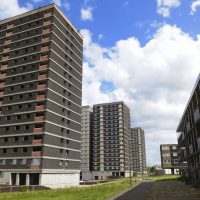
In the aftermath of Grenfell, the industry had to rethink how we continue to value property and provide borrowers, lenders and stakeholders with the assurance they need. It soon became apparent that Aluminium Composite Material (ACM) above 18m was not the only problem.
Things quickly began to unravel as major issues were uncovered within the wall systems themselves, and at varying heights.
Issues in the valuation and survey space
Valuers and surveyors are faced with evaluating tall buildings without documentation or visual signs to confirm that wall systems did not require remediation.
Defects have become routinely apparent to buildings of varying heights and this issue has proved highly challenging for the sector as a whole.
To restore confidence in the high-rise residential buildings market, the Royal Institution of Chartered Surveyors (RICS), UK Finance and the Building Societies Association along with a number of other stakeholders developed the EWS1 form which came into use in December 2019 for 18m+ buildings – as was reflected in the guidance at the time.
This is a process where if a problem is suspected, it is then deferred to a specialist to confirm whether or not works are needed and reported in a clear way by way of a pro-forma.
The challenges
Post-Grenfell, while some buildings were confirmed to have the necessary buildings regulations, when the same buildings were checked for the EWS process significant defects have been found to the cladding system and, in some cases, costing millions of pounds to correct.
Meaning there are buildings out there with full building regulations but still with potentially significant defects.
This has been particularly challenging for a number of reasons, not least because the survey and valuation process is predicated on relying on statutory approvals.
Not being able to continue to do this as the story around Grenfell has unfolded has meant secondary checks to buildings with wall systems to confirm whether works are needed.
Many positives have been achieved through the development of the EWS1 but a number of challenges remain, namely:
- There remains confusion in the PI market around the cladding and valuations.
- The availability of competent persons.
- Ongoing uncertainty around building regulations, building warrants and the statutory sign off process.
- Evolving Ministry of Housing, Communities and Local Government (MHCLG) guidance – above and below 18m.
- Financing repair work.
Arguably, the big challenge is understanding and delivering parts of the MHCLG guidance, especially as “the need to assess and manage the risk of external fire spread applies to buildings of any height”.
This guidance potentially brings many more buildings into scope and this has been one of the main challenges of 2020, in terms of assessing and interpreting what the government mean by that sentence and which buildings genuinely represent the greatest risks.
The solutions
The industry has come together in an effort to try and find a solution to this.
From the EWS to the development of the Fire Industry Association (FIA) portal, the willingness to cooperate and collaborate is unprecedented. The will certainly exists but in reality can our industry solve this alone?
RICS is reviewing the EWS process and a revised scope is currently out for consultation and we support the work here to focus on the buildings posing the greatest risk.
This will also bring some much-needed clarity and consistency for the many stakeholders impacted by this. At the time of writing, this has already gone through a significant part of this consultation.
Its aim is to create a sensible and proportionate approach to focus on which buildings require an EWS and which ones do not.
As outlined in the challenges, risk assessments need to be made for every building and quickly. However, this means more people, more training, more education and some significant upskilling. Answers also need to be found in the PI market.
Two-pronged solution
The longer-term solution to this issue requires central coordinated support from the governments north and south of the border, and the question over whether there is the potential for a coordinated procurement of labour and materials to remediate buildings remains.
Maybe a different way of using the funding already made available?
The biggest elephant in the room is that upfront funding needs to exist and leaseholders need to access this funding to get buildings remediated.
Any alternative to that will simply see the market stagnate. So, in reality, the solution is two-pronged.
Review the EWS process to make this the most efficient and effective it can be but to also continue to lobby the government for further support and action.
This is a complex matter but one which needs resolving, and quickly.
















